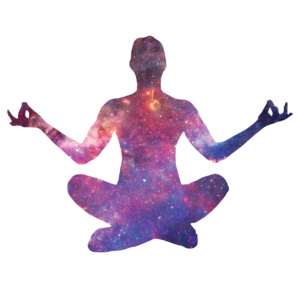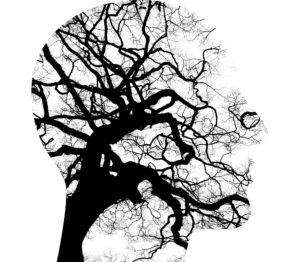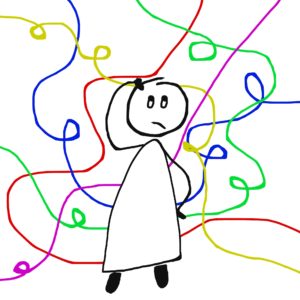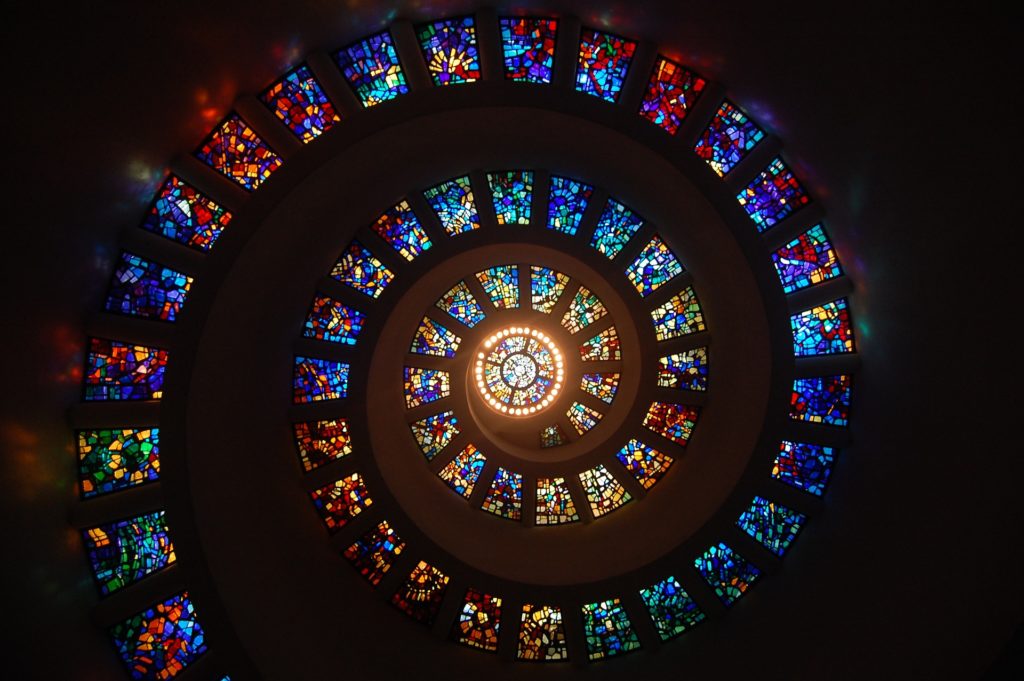In my last post, I very briefly went over what the seven chakras are. Truly gaining a deep understanding of them seems, in my opinion, really hard to do.
I plan to revisit each chakra in more detail in future posts, but for now I’m going to focus on answering the question of whether or not an understanding of chakras is necessary or helpful for a good yoga practice.

Before I dive into answering this question, I’m going to answer another question that you may or may not be asking:
Why does this even matter?
The truth is that for some people, it might not matter at all.
However, it matters to me because I understand that this aspect of yoga can be off-putting to certain types of people, and I feel really strongly that yoga is something that can be helpful to anyone from any walk of life.
I would hate for someone to miss out on the best parts of a yoga practice because they felt like it was too spiritual or “New Age” to be accessible.
The utility question matters because I think yoga is for everyone, despite its sometimes frivolous and New Age-y reputation.
I will also freely admit that I’m largely creating these posts as a way for me to organize what I’ve learned because I’m a bit skeptical about the concepts myself. Accepting these ideas goes against my nature, but I want to give them a fair chance.
Plot Twist: Chakras Are More Than I Thought
I was surprised to learn that there are a number of different teachings that more or less describe chakra work.
In Taoism, the concepts of chi and meridians closely parallel the yogic teachings of prana (breath or life energy) and nadis (channels for life energy to flow through the body). The main difference is that chi and meridians are approached in a more physical manner related to bodily health, whereas prana and nadis represent spiritual energy as well.

I’ve also seen the basic ideas of chakras likened to similar concepts in Tibetan and Mayan religions as well as teachings from Native American, Egyptian and African cultures. There are even parallels between the chakra teachings and the seven Christian sacraments as well as the Jewish Kabbalah’s Tree of Life.

In a way, the broader idea of the chakras can also be likened to the Jungian ideas of the personal and collective unconscious. Chakras are called energy centers in the body, but they are also said to act as storage and filters for everything your current and past selves have ever encountered. Even if you don’t subscribe to the idea of past lives, the idea of the collective unconscious is a much more concrete and well-explored concept.

The New Age Caveat
I think it’s important to make a distinction here before I go any further. There are a lot of bastardized versions of the original teachings about chakras.
Some scholars say that anything translated into English will have lost some of its original meaning simply because direct translation from Sanskrit to English is so difficult, but this isn’t exactly what I mean.
I mentioned in my last post that during my initial reading and researching, I found a ridiculous number of conflicting systems. This is the bastardization problem I’m referring to.

As far as I can tell, the original philosophy of chakras named:
- The seven major centers and their corresponding imagery
- The seven elements of creation
- The three aspects of the body
- The concepts of prana, nadi and the various energies
And that’s it.
However, if you look online or even just randomly pick up a book about the subject you’re likely to find hard and fast rules about how each chakra has a specific mantra sound, color, musical note, governing celestial body, sacred number, corresponding gemstone, lucky number, day of the week, food you should eat and any number of other oddly specific things.
If you enjoy deep dives into mysticism, feel free to disregard my opinion on the matter and follow those rules to your heart’s content. I personally just feel like much of the specificity has been made up to set various authors and yogis apart from one another rather than add anything meaningful to the topic.
I don’t like the idea of attaching so many arbitrary yet oddly specific rules to the chakras. It muddies the waters too much.
So What’s the Verdict?
Ultimately, I still have a lot more to say about the topic. Much like last week, however, I’m really trying to keep to a single point and not force you to skim through a dissertation.
If you’re looking for a simple answer to the question of whether or not chakras have a place in a yoga practice, I think that the answer is yes, but only if it serves you.
You don’t have to think about it in an overly spiritual way in order to derive benefit from it. Simply understanding that your posture, breath and flow of movement can affect how your mind and body feel is enough.
So, whether you want a deeper spiritual meaning to your yoga practice, or you simply want a better understanding of how and why yoga can benefit you, I think that studying chakras is useful.
I also think it’s important to remember that mystical and religious ideas are almost always created to help make difficult concepts more relatable and accessible to the people of that time. Ancient cultures didn’t have good ways to articulate the physical and emotional benefits of mindfulness and movement, so they packaged them in ideas like chakras, meridians and spirit animal teachings.

Do you agree? Do you have questions or a different perspective? Let me know in the comments! I’m still new to all of this, so let’s chat!